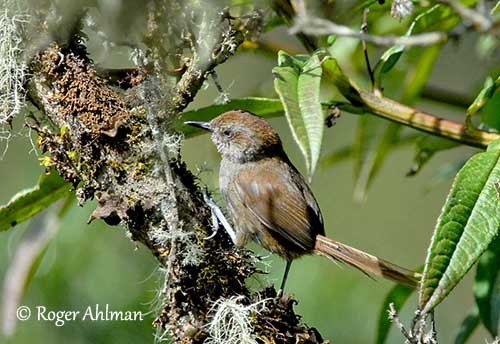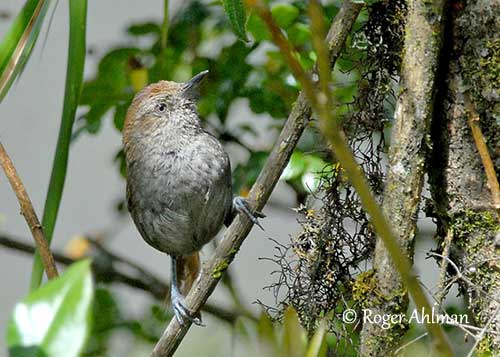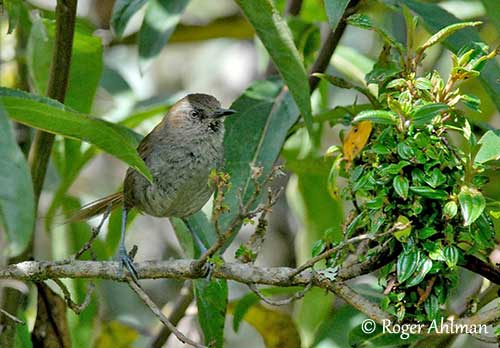
Fr: Synallaxe de Heller
Ang: Puna Thistletail
All: Punadistelschwanz
Esp: Piscuiz de la Puna
Ita: Codaspino della puna
Nd: Punadistelstaart
Sd: punaborststjärt
Photographer:
Roger Ahlman
Pbase Galleries Peru and Ecuador
Text by Nicole Bouglouan
Sources:
HANDBOOK OF THE BIRDS OF THE WORLD Vol 8 By Josep del Hoyo-Andrew Elliott-David Christie - Lynx Edicions - ISBN: 8487334504
BIRDS OF SOUTH AMERICA – Passerines - by Robert S. Ridgely and Guy Tudor – HELM Field Guides – ISBN: 9781408113424
BIRDS OF PERU by Thomas S. Schulenberg, Douglas F. Stotz, Daniel F. Lane, John P. O’Neill, Theodore A. Parker III – Princeton University Press 2007– ISBN: 978-0-691-13023-1
The Cornell Lab of Ornithology - Birds of the World
Fatbirder - Furnariidae – Ovenbirds
Wikipedia, la enciclopedia libre
The bird and its nest, where everything starts… Furnariidae (Ovenbirds)
Puna Thistletail
Asthenes helleri
Passeriformes Order – Furnariidae Family
INTRODUCTION:
The Puna Thistletail is found in southern Andes, in S Peru and N Bolivia.
It frequents the dense undergrowth of montane forests, up to 2,800/3,600 metres of elevation. It feeds on arthropods gleaned from the vegetation.
Like most members of the family Furnariidae, this species builds a dome-shaped nest close to the ground, hidden in dense clump of grass at forest edge.
The Puna Thistletail is threatened by heavy deforestation and forest fragmentation. It is currently listed as Vulnerable.
The name of this species pays tribute to Edmund Heller, an American zoologist.
DESCRIPTION OF THE BIRD:
Biometrics:
Length: 17-18 cm
Weight: 13-16 g
The Puna Thistletail has dark rufescent-brown upperparts, including the wings. The long, deeply forked, graduated tail is slightly paler. The feather barbs are reducing in both length and density, giving worn and pointed appearance.
On the greyish underparts, the chin is pale ochraceous and contrasts with the dark greyish upper throat with paler, fine streaks. Flanks and undertail-coverts are washed brownish.

On the head, the crown is like the upperparts but the face is brownish-grey with greyer and finely mottled forehead. There is an indistinct greyish supercilium behind the eye.
The thin, two-tone bill has black to grey upper mandible, whereas the lower one is grey to whitish with dark tip. The eyes are brownish-grey to pale brown. Legs and feet are grey to blue-grey.
The birds found in Puno (Peru) have darker, less reddish back and tail, and slightly darker breast.
Male and female are similar.
The juvenile is not described.
RANGE:
The Puna Thistletail has restricted range in the Andes of S Peru (Cuzco, Puno) and N Bolivia (extreme N La Paz).
HABITAT:
The Puna Thistletail frequents the undergrowth of low montane woodland and forest borders near the treeline.
Most populations occur in the humid Andean elfin forest in treeline habitats, including patches of elfin forest and upper cloud forest surrounded by puna grasslands. The species is visible between 2,800 and 3,600 metres of elevation.

CALLS AND SONGS: SOUNDS BY XENO-CANTO
The Puna Thistletail’s calls include sharp “pyeek”, “peent” and “preek” notes. These calls are usually sharper than other Peruvian thistletail species.
The song is a short, fast series of “pee-peep-p-p-p-t-t-tii” of about 1-2 seconds, accelerating and increasing in volume before fading towards the end. This song is often given twice.
BEHAVIOUR IN THE WILD:
The Puna Thistletail feeds mainly on various arthropods. Insects are gleaned from foliage and branches, mosses and lichens.
It forages singly or in pair, rarely in mixed-species flocks.
The courtship displays are poorly known, but absence of sexual plumage dimorphism may indicate that both adults share the nesting duties.
We can suggest that the long, graduated tail plays a role during the displays, as it is enhanced by adapted postures. They are probably monogamous.
The Puna Thistletail is resident within its restricted range, with no known altitudinal movements.
This species only performs short flights through the forested habitat, between the feeding areas.

REPRODUCTION OF THIS SPECIES:
The breeding season takes place in September/December.
The members of the family Furnariidae breed when insects are available, usually during the austral spring and the summer months, but also during the wet season.
From two observations, two nests were found in October in Peru. They were dome-shaped and placed near the ground in dense clump of grass.
The first nest was partially supported by a small bush, about 40 centimetres above the ground. A platform of flattened grass and twigs was at 15 centimetres from the nest entrance. Two young birds were in the nest on 6 October.
The second nest was in similar setting, about 80 centimetres above the ground. It contained two eggs on 10 October.
Both nests were built 1-2 metres from the edge of the elfin forest.
No more information.
PROTECTION / THREATS / STATUS:
The Puna Thistletail is described as “fairly common” but it is affected by habitat loss through accelerating deforestation and fragmentation. Grazing and burning in the Andean timberline involve the decrease of the population.
However, the species is present in some national parks and protected areas in Peru and Bolivia.
But currently, the Puna Thistletail is listed as Vulnerable.
